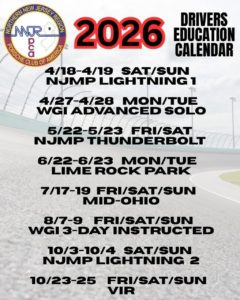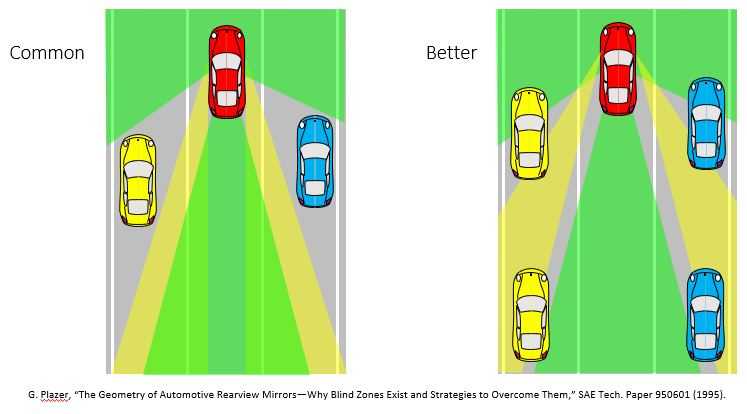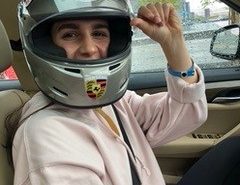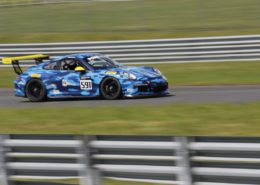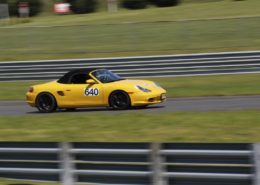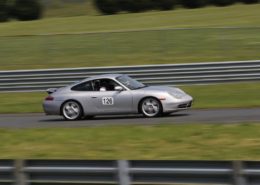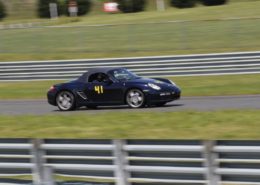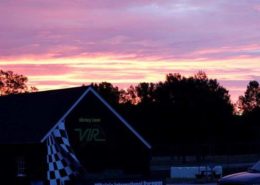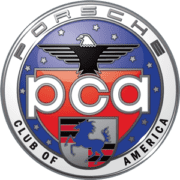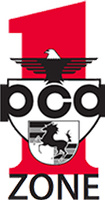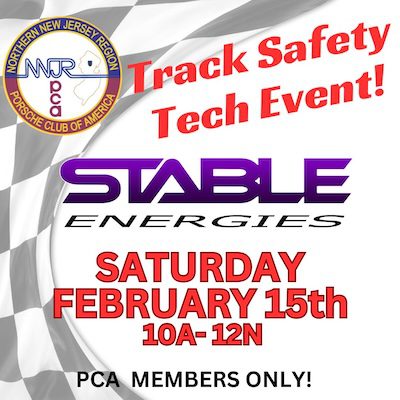 https://nnjr-pca.com/wp-content/uploads/2025/01/Track-Safety-tech-event.jpg
400
400
Dyke
https://nnjr-pca.com/wp-content/uploads/2020/04/NNJRLogo2020Grey-300x60.jpg
Dyke2025-01-28 08:25:192025-02-05 11:49:36Track Safety Tech Session Feb 15th
https://nnjr-pca.com/wp-content/uploads/2025/01/Track-Safety-tech-event.jpg
400
400
Dyke
https://nnjr-pca.com/wp-content/uploads/2020/04/NNJRLogo2020Grey-300x60.jpg
Dyke2025-01-28 08:25:192025-02-05 11:49:36Track Safety Tech Session Feb 15thDRIVER EDUCATION
NNJR PCA offers members an opportunity to drive their Porsche at speed “on track” at a number of premier Motor Sports facilities throughout the northeast, and beyond. We practice and teach high-performance driving techniques in a safe, controlled environment. NNJR Driver’s Education is:
Safe, Serious, Fun
We take the safety and instructional aspects of our events very seriously.
2026 NNJR Driving Event Listing
For Non NNJR sponsored events – visit the hosting Region’s website for registration dates and details.
There are limitations: The discount is only good for that event. If you cancel, the discount is forfeited, no carry over to another event. The winners will be notified just before each event. Best of all, you don’t have to be present to win! Sign up right away, and bring a friend along. Does your buddy have a BMW, Corvette, Audi, etc.? Porsches preferred, but not required.
| Track | Dates | Registrations | Tech Location | Tech Date | Maximum dB at 50ft. |
|---|---|---|---|---|---|
| Lightning 1 | Apr 18-19 | TBD | TBD | TBD | No Limit |
| WGI Solo/Adv | Apr 27-28 | TBD | TBD | TBD | 105 dB |
| Thunderbolt | May 22-23 | TBD | TBD | TBD | No Limit |
| Lime Rock | Jun 22-23 | TBD | TBD | TBD | 88 dB |
| Palmer with Metro | Jun 27-28 | TBD | 103 dB | ||
| Mid-Ohio | July 17-19 | TBD | TBD | TBD | 103 dB |
| WGI 3-Day Instructed | Aug 7-9 | TBD | TBD | TBD | 105 dB |
| Lightning 2 | Oct 3-4 | TBD | TBD | TBD | No Limit |
| VIR | Oct 24-25 | TBD | TBD | TBD | No Limit |
Upcoming DE Events
Time
Month Long Event (January)(GMT-05:00)
Event Details
Get Ready! NNJR event dates for 2026 are starting to take shape! Here are some of the preliminary event dates, so do not wait and mark your calendars now. Drivers Ed
Event Details
Get Ready! NNJR event dates for 2026 are starting to take shape!
Here are some of the preliminary event dates, so do not wait and mark your calendars now.
Drivers Ed
4/18 – 19 Lightning 1
4/27 – 28 WGI Advanced Solo
5/22 – 23 Thunderbolt
6/22 – 23 Lime Rock
6/27-28 Palmer (w/ another PCA club)
7/17 – 18 -19 Mid-Ohio
8/7 – 8 – 9 WGI 3-Day Instructed
10/3 – 4 Lightning 2
10/23 – 24 – 25 VIR
Rally & Off Road
Drivers Ed News
What is the #1 Biggest DE Mistake?
What is the biggest mistake that drivers make before attending an NNJR DE event?
They skip the Track Pack!
The Track Pack isn’t just a suggestion—it’s essential. It is your complete guide to NNJR DE events, outlining the crucial rules and procedures that govern everything we do. We expect every driver to master this information. Yet, far too many arrive unprepared.
The Track Pack comes in two sections:
- Track-Specific Details: Your event playbook—schedule, driver roster, officials, gate hours, parking logistics, and more.
- Season-Long Procedures: The core rules that apply to every NNJR DE event throughout the season.
While reviewing the event-specific Track Pack seems like a no-brainer, the season-long section is arguably even more critical. It arms you with the knowledge you absolutely must have:
- Tech Inspections: Ensure your car is track-ready and safe. This section tells you how.
- Event Operating Procedures: Understand how the event flows and what’s expected of you.
- Event Safety Rules: Learn the critical safety protocols that protect everyone on track.
- Aggressive Driving: Know the boundaries and maintain a safe and courteous driving environment.
- Flags: Master the language of the track—understand what each flag means and how to respond.
Don’t be the driver who shows up unprepared! Take charge of your track experience. Know the Track Pack!
How are drivers assigned to a specific run group?
Run group assignments are crucial for safety and enjoyment, and the registrar takes this responsibility very seriously. Drivers are placed based on experience to minimize speed and experience differentials.
For student (instructed) groups, past instructor evaluations in DrivingEvals are key. For other groups, the registrar considers the driver’s event history, check ride/instructor ride feedback, and input from home region Chief Instructors (for PCA members from other regions). For large, multi-region events, balancing diverse experience levels requires careful judgment based on years of experience in making run group assignments.
Run group placement isn’t static. For example, a driver could be in White at one event, Black at the next event, then back in White (the same between Black and Red) because the registrar has to balance numbers between run groups. Also note that NNJR run groups tend to be faster than some PCA regions; as a result, a driver could be in Red in their home region and Black at an NNJR event.
In all groups, the registrar tries to avoid large speed differentials. That said, not all differentials can be avoided, so drivers should always expect that there will be faster drivers, and slower drivers, in their run group.
During each event, the Chief Instructors look for large speed disparities and make adjustments as the event moves along, typically after the first two or three sessions.
How do drivers “move up” to the next Run Group?
How do drivers “move up” from one run group to the next?
NNJR has clear, written expectations that a driver in each run group must meet. You can read them here.
Drivers in student groups move up primarily based on feedback from their instructors, as documented in DrivingEvals.
Drivers in other groups move up based on their experience, demonstrated ability to meet the expectations for the next group and based on observations/feedback from NNJR Chief instructors.
It is important to note that any driver can request an evaluation ride by contacting the Chief Instructor during an event. Moving from White to Black or Black to Red typically requires at least two evaluations. That said, an evaluation does not automatically mean a move up. All drivers in White, Black and Red are encouraged to have an instructor ride with them to provide suggestions and feedback, at least once per event. At some events, an instructor will be assigned to each driver in White and/or Black for one session.
Why are DE events so expensive?
NNJR DE events are priced to provide high value track time. NNJR is a not-for-profit organization and we run the DE program to break even, with some events at a deficit and some a small surplus. Our prices are highly competitive with other PCA events (often lower) and significantly lower than commercial HPDE events.
The three tiers of prices (student, driver, instructor) provide incentive for instructors while keeping driver and student prices as low as possible.
The primary driver for recent price increases is the soaring cost of track rentals. Tracks are experiencing unprecedented demand, allowing them to dramatically raise their rates. It’s also important to note that NNJR events include one and often two ALS ambulances (many other DE events have only a BLS ambulance), an extra tow truck and/or rollback and other “behind the scenes” support.
Why does registration close two weeks before each event? Can I sign up later?
Why does registration close two weeks before each event? Can I sign up later?
We urge all drivers to register for events early. The two-week registration cutoff isn’t arbitrary—it’s essential for creating the best possible track experience. This deadline allows our registrar to craft student-instructor pairings and finalize run group assignments and to clear any wait lists.
Unfortunately, too many drivers wait until the last minute to sign up or cancel. This makes extra work for the registrar and means that student-instructor assignments are issued only a few days before each event.
That said, our registrar goes above and beyond to accommodate late entries, especially from NNJR and other PCA regions. We understand that unforeseen circumstances like family or health emergencies can necessitate last-minute cancellations.
While we always try to help, registering early guarantees your spot and helps us create a top-tier track experience.
Why does a PCA waiver have to be signed for each event?
National PCA insurance rules require a signature for each event when registering and again at the track.
Note: each track has its own waiver at the front gate; that is not the PCA waiver. In other words, you should always expect to sign two waivers at each event.
Why do I need a pre-event Tech for each DE event?
It is obvious that driving on the track at high speeds places many stresses on the car. Pre-event tech’s are designed to assure that your car is safe, both for you and for other drivers.
One Tech is not acceptable for multiple events because the condition of the car can obviously be very different after two or three days on track and all drivers expect that every car on track is as safe as possible.
I have an older Porsche: can I drive at a DE?
Yes! If you have limited track experience, you will be fine in the student groups. In Intermediate and Advanced groups, some drivers of older cars don’t feel comfortable with the pace of the newer cars. For that reason, NNJR is exploring a Classic Porsche run group and/or event.
Who is invited to social hours/dinners at NNJR DE events?
All drivers and their guests are invited to every social hour and dinner at our events. In fact, we encourage you to bring your family and friends. Many drivers find that social hours are a big part of the DE experience. There is no extra cost.
Instructors: When do I get my student assignment?
FOR INSTRUCTORS
When can I expect to get my student assignment?
Student instructor assignments are typically emailed one to two days before “travel day”, i.e. two or three days before the event starts.
NNJR never assigns more than one student unless the instructor has specifically agreed to take two students (we occasionally do ask for volunteers to take 2 students at events with many students; volunteers get a credit toward a future event). However, we do often assign a White driver in addition to a student. In this case, the request is to ride with the White driver once during the event, ideally the first day, for some or all of one session.
Important note: the email with your student assignment also shows all of the other instructor student pairings in Green, Yellow and Blue run groups, with car numbers. Therefore, if you wish to find out who is instructing in car XX that you saw on track, you have the information to do so.
Assignments are not sent sooner because inevitably there are late additions and cancellations for both students and instructors. If they were sent earlier, the result would be a large number of last minute corrections which cause a great deal of extra work during the instructor meeting and, worse, many students confused about who their instructor is.
Instructors: I’m instructor, can I instruct at my first NNJR event?
FOR INSTRUCTORS
I am an instructor with another PCA region, and have my national PCA number. Can I automatically instruct at my first NNJR event?
No, not automatically. NNJR follows a protocol similar to many other regions and requests input from your home region Chief Instructor. In the vast majority of cases, the reference is positive and you will be assigned a student.
Also note that you will probably be placed in the Black run group at your first event; NNJR has many instructors driving in Black. Our Black run group is “fast” and Red is “faster.”
Track Packs, Tech Forms, Waivers, Driver Evaluations & Downloads
Driver Ed Evaluations
NNJR uses an online “log book” and feedback system where students see Instructor feedback and suggestions. Students also provide feedback on their instructor, classrooms and other aspects of the event. The link is drivingevals.com. The Instructor and Student Guides provide more detail. And the worksheets are a handy way to make your notes while at the track so that it is easy to provide the online feedback.
Instructor’s Guide for Driving Evals Instructor Worksheet (Print and bring to the track.)
Student’s Guide for Driving Evals Student Worksheet (Print and bring to the track.)
NNJR Run Group Advancement Criteria What you need to know to be moved up to a higher Run Group
Track Packs
Safety Tech: Tech Inspection Info
Download DE track-tech-form HERE
Track Tech Chair: tracktech@nnjr-pca.com
Safety tech is a valuable process that is integral to NNJR-PCA Driver’s Education program. It performs many functions:
- Ensures that all cars on track meet specific standards before and during the event.
- Is essential to comply with PCA’s insurance coverage, and thus maintain the viability of this valuable (and fun!) program
Please download and read the forms above – they contain the complete, official requirements. The video shows many of the steps involved in the NNJR pre-tech. Below the video are some FAQs.
Technical Inspection for Driver’s Ed involves 3 steps:
- An on-lift examination by an Experienced Safety Tech is required and should be performed approximately 2 weeks prior to an event, allowing you ample time to make repairs, if needed. NNJR provides a free pre-tech prior to each event, hosted by one of our member shops or dealers. It is also possible to have the inspection done at your convenience at any qualified shop. Details are on the tech form (link above). NNJR provides a list of pre-qualified shops, however any Porsche dealer or qualified Porsche specialist may perform the inspection as long as they 1) use OUR (NNJR) form and, 2) sign and stamp the form.
- On-site tech at the beginning of the event; read the track pack for scheduled times. On-site tech is NOT a substitute for the pre-tech. At the on-site tech your form will be collected and checked, and a host of checks will be performed, per the tech form. Among the things that are performed at the on-site tech are
- check that the car is truly EMPTY,
- check of your helmet, belts and other safety equipment and,
- check of wear and adjustment items like brake lights, tires and lug nuts. Assigned numbers will also be checked AND VERIFIED. Please be sure that your tech form is completely filled out, signed by you and the shop, and that your number matches the one assigned to you during registration. Incomplete forms will be deferred from the line until they are complete.
- The track side tech is performed only on the first day for multi-day events. That means drivers are responsible to carefully monitor those items that deteriorate on a track day – tires, brake pads, lug nuts etc. The NNJR tech team is available at any time to assist you if you have questions. They are more than willing to do a track side tech on the second or third day of mult-day events: just ask.
It’s probably obvious why tech is required. However we would like to point out some collateral benefits of our safety tech program:
- Each time your car goes on a lift, you get an overview of its condition
- As long as you have signed the waiver and obey safety rules, you are invited to view your own car to see and learn things about it. Many members view this as a real benefit.
Pre-track techs are typically held from 6-8PM Monday or Tuesday evening about 2 weeks before an event. The location is listed on www.nnjr-pca.com and is provided in the e-mail that is sent to all drivers. Remember that these are volunteer events run and staffed by your fellow members!
Questions can be directed to the track-tech stewards at tracktech@nnjr-pca.com
See you at the track!
Safety-Tech FAQ:
Q: Can I use my old (Snell 2010) helmet?
A: Helmets must be certified to the Snell 2015 or 2020. 2010 helmets are no longer acceptable. PCA requires “Snell approved helmet, which has the current available Snell rating or the one previous Snell rating” see Drivers Education Minimum Standards | Porsche Club of America (pca.org)]. Highly recommended for DE use is the SA rated helmet, due to its fire rating.
Q: Do I need a fire extinguisher?
A: Fire extinguishers are recommended, but not required, for all groups. If you install an extinguisher, it must be mounted metal to metal and must pass the safety tech. See the tech form for more information.
Q: What are the mechanics of the club-provided free tech inspections?
A: These events are held roughly two weeks before each event, almost always on a Monday night, from 6-8pm. The location varies but is a repair shop or dealer affiliated with NNJR-PCA. They are first-come first served. Bring your tech form, your car, your helmet and get on line. You may wish to volunteer to help either with paperwork, or if you are experienced, with the technical inspections themselves.
If I cannot attend NNJR’s pre-tech event, what are my inspection options?
A: We try to be very flexible, within the constraints of ensuring your safety and the safety of others, and adhering to our process. This means that you are free to use any legitimate, licensed repair facility, so long as a) they use our form, b) they and you fill it out and sign it, and 3) you provide either the shop stamp or attach the official receipt. Read the tech form cover page for details.
Turn by Turn
In this section, we have descriptions and pictures for the tracks that NNJR drives. You will find videos and advice about driving on various websites, but often the experience level of the author (or driver in a video) is unclear. The materials here have been prepared by NNJR Chief Instructors as an aid for all drivers, but particularly those new to a track or with limited experience, unless otherwise noted.
Most drivers find it useful to review these materials before an event, especially for their first time at a track. On the other hand, if you are new to DE and find some of the material hard to apply, don’t worry! Your instructor will cover everything you need to know. New drivers generally benefit the most by concentrating on the turn numbers/names and the line. New drivers may also want to look through the Drivers Manual on this page under the INSTRUCTION AND RESOURCES.
If you have questions or suggestions, please email trackchair@nnjr-pca.com.
NJMP – Thunderbolt
NJMP Thunderbolt Turn by Turn (Slides)
Turn by Turn Discussion for Students (YouTube)
Turn by Turn Discussion for Advanced Drivers and Instructors (YouTube)
Lime Rock Park
Driving Lime Rock – Bill Gilbert’s article about how to drive Lime Rock
Lime Rock Turn by Turn – YouTube video
Lime Rock Turn by Turn – Annotated photos of each corner
Sensory Input Worksheets for Lime Rock
VIR
Written description: VIR Turn by Turn
Narrated Turn by Turn Video
Turn by Turn Slides (used in video)
Video: One Lap of VIR (above)
Summit Point
A narrated Turn by Turn video is available here: How to Learn a New Track and Summit Point Turn by Turn.
With thanks to Potomac and Chesapeake PCA, a short and long version of Summit Point Track Guides. Summit Point Track Guide (short version: 24 pages) Summit Point Track Guide (long version: 87 pages) There is one update to the material shown when leaving the pits. Now the virtual blend line goes all the way to Turn 1; i.e. stay track right exiting the pits until the apex of Turn 1.
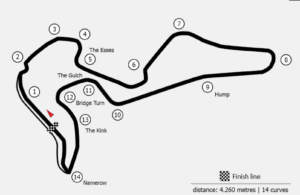
Le Circuit Mont-Tremblant
How to Learn a New Track – (with references to Mt Tremblant)
Mt Tremblant Turn by Turn – (by Bob Rouleau, Director, Driver Education for Rennsport Region PCA)
The Line at Mt Tremblant – (video driven by Bob Rouleau, Director, Driver Education for Rennsport Region PCA) and be downloaded from the link below
Track Maps
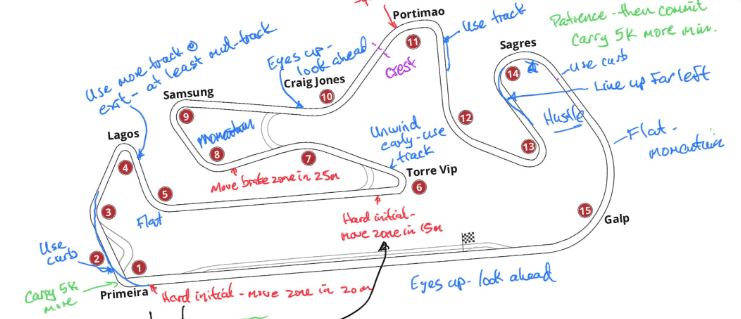
Special thanks to Ross Bentley and his SpeedSecrets site for allowing NNJR to access his track maps. If you are interested in viewing additional maps, please visit Ross’s webpage and check out his books, articles and services.
For students, print out a copy of the event map. Your NNJR Instructor will be happy to add their comments during the event. It’s an excellent learning tool to review the map and comments after the event and to bring the map the next time you visit the track.
Track Maps
Welcome to DE!
NNJR Drivers Ed (DE, sometimes called HPDE) events let you drive at speed, at your pace, on famous tracks all over the northeast US. You drive with an experienced driving instructor who will introduce you to the “Safe, Serious, Fun” that so many other drivers enjoy.
Below you will find some High Performance Driving information to help you get started. For those who want more information, please click here.
What is a Driver Ed event?
Simply put, a “DE” or “HPDE” event is the opportunity to drive your Porsche at speed on a track in a very safe environment. NNJR often refers to DE as “Safe, Serious, Fun.” NNJR tracks include many you have heard of including Lime Rock, Watkins Glen, Pocono, MidOhio, VIR and Mosport.
The Safety aspects include a complete pre-event Technical Inspection of your Porsche and a daily track-side Technical Inspection (otherwise referred to as “Tech”). All drivers wear helmets and seat belts (NNJR has a limited number of loaner helmets available to new drivers). The track itself is carefully inspected and supervised by our Chief Instructors. While on the track, drivers rely on Flags and Flaggers for advance knowledge about what is around the next corner. And passing is only allowed on straight sections, with a signal from the car being overtaken. New drivers have an instructor assigned for each event.
Serious means that we approach driving at speed with all due respect. A drivers meeting starts each day at the track. Track conditions are described along with any other factors that may affect that day’s driving. Student drivers meet their instructor and discuss the area(s) they will focus on for each run. Classroom sessions introduce and reinforce a variety of topics including car behavior such as understeer and oversteer as well as driving techniques such as trail braking.
The Fun part is driving on track for at least 4 sessions each day! Students drive at a pace they are comfortable with, knowing that their instructor will keep them safe. Virtually every new driver has a big smile when they step out of their car after every session. As a bonus, you will meet many other driving enthusiasts and have many opportunities to socialize.
One final note: Drivers Education is NOT racing! We do not teach racing techniques and our events are not intended to be practice for racing. Racers can sign up for PCA Club Race events.
You will find that attending DE events improves your street driving through improved awareness of your Porsche’s abilities, and your own.
So what are you waiting for? Sign up now for your first event!
How Do I Register?
To register for an event, follow the procedure for on-line registration at “motorsport reg”. Setting up an account is easy, then a few clicks to register. As a reminder, be sure to include any driving events you’ve attended in the past and include your PCA Membership Number.
Here is the rub! NNJR Driver Education events can get oversubscribed: i.e. some applicants may not be accepted. Your position on the list is determined by the time and date you complete the on-line registration. This means you should register on the first day that an event opens. New driver applications are accepted based on the number of Instructors available. Drivers who are not immediately accepted are placed on a waiting list and are almost always accepted closer to the actual event.
The good news: almost all drivers who apply on the Open Date get in. And it is the events close to New Jersey that sell out: Lime Rock, NJMP and Watkins Glen. Students can almost always get in to the other events, even after the Open Date. The bottom line: put the Open Dates on your calendar and make sure you register on that date!
Once accepted, you will get an email directing you to the Acceptance Package on this website.
It contains:
- A welcome letter with all of the Event requirements and regulations
- The NNJR Sponsored Tech location, date / time and directions
- Link to the tech form
- Tentative Run Group List with your car number.
- Directions to the track
- A list of motels in the vicinity of the track: be sure to make reservations as soon as you receive the Acceptance package.
Just prior to the event, you will get an email with a link to the Track Pack. Print these documents and bring them with you to the track. The Track Pack contains:
- A letter outlining the rules and regulations for the event, flag information, a track map and the event officials.
- The final Run Group Assignments and car numbers
- The Event Schedule: one page for each day. Be sure to print it out as copies will NOT be available at the track
- The final Work Assignments – Some drivers have a work assignment during part of the event (you can volunteer during the registration process.) Work assignments do not interfere with driving time.
Close to the event, you will get an email from your instructor introducing him or herself and offering to answer any questions you may have. You and he/she should also agree on a place to meet.
Your car MUST pass a complete Safety Inspection prior to arriving at the track. NNJR sponsors a free Tech Inspection for each of our Driver Education Events, generally about 10 days before the event. If you are unable to attend the NNJR safety inspection:
You are responsible for having your car tech’d at an NNJR-approved site and paying for the cost of the inspection (if any).
Bring the completed and signed Tech Form to the track and give it to the Tech Coordinator at the first daily Track-Side tech.
Plan your trip to the track. Some tracks (NJMP and Lime Rock) are close enough that (really) early risers may wish to drive up in the morning. However, most people prefer to drive up the day or evening before. Note the time that you have to be at the track: 6:30 AM is a good target. And be sure to fill up your gas tank and make sure the tires are at or above factory pressures before you get to the track!
How Do I Meet My Instructor?
You will receive an email from your instructor immediately prior to the event and you can ask where to meet; your instructor will often suggest a time and place to meet. If not, your Instructor will be looking for you in the paddock (by car number). If you don’t meet before, your Instructor will meet you at your car in Staging.
How Do I Meet Other Drivers?
You will have many opportunities to meet and talk with other drivers, including the Drivers’ Meeting, Novice Meeting and Social Hour. You will find most drivers friendly and very willing to welcome you, answer your questions and introduce you to other drivers. If you see a group in the paddock, don’t be afraid to introduce yourself. All of us were in your shoes at one point and were made to feel welcome.
First time attendees at NNJR events will be welcomed by the NNJR Track Ambassadors. Look for an email before the event with the details.
What If I Don’t Like My Instructor?
If you don’t communicate well with your instructor, or don’t get along for any reason, simply ask one of the Chief Instructors or the Track Chair for a different instructor. There is no penalty to you or your instructor: sometimes people don’t “click” and we want you to be comfortable and have fun!
YOUR PORSCHE
This driver’s manual does not try to mention all of the things that you could do to prepare your Porsche for the track (though the basics are easy: pass the tech inspection, check tire pressures, gas (fill up the tank just before you arrive at the track), car numbers, and removal of any/all loose items from the car).
But be sure that all of those items are finished and out of your mind before you head onto the track! If any of these items are nagging at the back of your mind, it will affect your driving. Similarly, if the car is making an unusual noise, or something doesn’t seem quite right, ask someone to help you investigate before it is time to go on the track!
Your mind should be free of distractions and ready to concentrate on driving. Make sure your Porsche is ready at least 15 minutes before your run. Use those 15 minutes to relax, go to the bathroom, get a drink and make sure your helmet is in the car!
Now that you and your car are dressed properly, lets talk about driving (well, we’re not quite ready yet).
CLOTHING AND SHOES
How you dress is important for both safety and comfort. Long sleeves and long pants made of cotton (or other natural fibers) are required. Jeans work fine. So do long sleeved T-shirts or polo shirts. Make sure you can move your arms and legs easily. If it is cold, take off your heavy coat before you drive (you can always turn on the heater). Shoes are very important. Regular sneakers (especially ones that are well worn) work well for many drivers, as do “boat” type shoes. They need to be able to slide off the brake pedal without “catching”, but not be so slippery that you have to hold them onto the brake. Leather-soled shoes are generally not recommended. No shoe with aggressive soles will work well (e.g. hiking boots, many running shoes and walking shoes). After you drive a few events, you may want to consider driving shoes.
HELMET
A helmet is the one required element that most drivers haven’t experienced. Unless you are an experienced motorcyclist, you probably have never felt the claustrophobia of a modern helmet. Most drivers find that it takes some time to get used to the helmet. And the first run of your first event won’t do it! You are likely to feel that you can’t see and that your peripheral vision is particularly constrained. Add the pressure on your head from the padding, and most drivers feel uncomfortable. You can prepare (somewhat) by wearing the helmet at home (though we don’t recommend driving in it unless you like to be stared at). Some people have been known to watch their favorite TV program with the helmet on! One last point: if you wear glasses, or sunglasses, take them with you when you try on helmets. The eyeports on some helmets may not fit your particular glasses. In fact, try on different models and brands of helmets to find the one that fits your head and glasses the best. Do NOT try to buy a helmet online: go to a store like Stable Energies and try on several. It often takes many tries to find one that fits properly.
DRIVING POSITION
Your position in the seat makes a big difference in your ability to control the car properly. Many drivers do not naturally sit in the proper position. The objective is to get you situated so that you have maximum support for cornering, easy control of gas, clutch and brake pedals, and complete ability to turn the steering wheel.
To get started, try the following (after hooking up your seatbelt, of course; and don’t forget to put on your helmet!). First, adjust the seat cushion so that you are “in” it as much as possible (put your left foot on the dead pedal and push your butt and shoulders all the way into the seat). Make sure you are getting maximum use of the seat bolsters. Next, slide the seat so that you can push the clutch and the gas all the way to the floor with some bend still left in your knee (if your knee is completely straight, you are too far away). Then, adjust the seat back so that your wrists are on the top of the steering wheel with some bend still left in the elbows. Remember that your shoulders should be all the way back in the seat. You can test the arm distance by putting your hands at 3 and 9 o’clock (some people prefer 2 and 10 o’clock; most of us hook our thumbs over the spokes) and turning the wheel more than 90 degrees to the left and right-without pulling your shoulders away from the seatback. Your elbows should still have a little bend in them. This technique allows the driver to use their arm muscles on the steering wheel, not the wrists. The wheel should be pulled in the proper direction. This provides the maximum amount of control, and is the least tiring. Don’t be surprised if you find yourself closer to the wheel than you expect: many drivers sit too far back.
Finally, after you are properly seated, adjust the mirrors so that you have maximum field of view. Note that most drivers do not have the outside mirrors adjusted to eliminate blind spots. To adjust them properly, as shown on the right below, take the following steps:
Rearview Mirror Adjustment
- From your new seating position (as per above), adjust the rearview mirror so you can see the entire rear window.
Left Mirror Adjustment
- From the proper seating position, rest your head against the driver’s side window;
- Adjust the left mirror until you can barely see the left rear back of your car.
Right Mirror Adjustment
- From the proper seating position, lean to your right so your head is near the rearview mirror mount;
- Adjust the right mirror until you can barely see the right rear back of your vehicle.
DRIVING THE LINE
When your Instructor drives the first 2 laps he or she will show you the proper line around the track. The line is also marked with orange cones: one for the turn-in point, one for the apex and one for the track-out point at each corner (this is a safe, late apex line). Make sure you know what each term means (ask your instructor if you aren’t sure).
While it may appear easy, actually driving the line consistently for each corner and for each lap is very challenging. In order to improve, one approach is to use the “Brake, Reduce brake pressure, Turn” sequence. “Brake, Reduce brake pressure, Turn” means that heavy braking (and downshifting) is finished in a straight line, while you can now lightly brake as you turn into the corner. This provides a consistent entry to each corner, and the car has a safe, consistent balance as you drive into the first third of the corner.
Reducing the majority of the braking force before initiating your turn but carrying light pressure on turn entry is called “trail braking”. The important thing for new drivers is not to have full brake pressure AND try to initiate your turn-in. Some corners reward a lot of trail braking and some shouldn’t have any, but your car will always reward a consistent weight transfer and smooth weight transfer from heavy straight-line braking to corner entry.
What Should I Bring?
If you are new to Driver’s Education, this list provides a list of “stuff” that you may want to consider bringing. The quantity of “stuff” seems to vary with the experience of the participant and the degree of modification to the Porsche. The following list of “stuff” (plagiarized from a list put together by Fred Zetterberg of CVR and Bob Michaelson of NNJR) is a good starting point.
Required Stuff
Helmet: Snell 2015 (2025 only) or Snell 2020 or Snell 2025. If you have to buy one, get a 2020 or 2025. And do yourself a favor and buy one that is SA rated. Note: NNJR does accept M (motorcycle) rated helmets, if you happen to have one. M-rated helmets are designed for motorcycles, SA for motor sports.
PCA membership card and driver’s license.
Tech Sticker from the NNJR Pre-Event Tech or Safety Inspection Form completed by an authorized shop.
Long pants and long sleeved shirt (natural fiber, no synthetics, cotton highly recommended). Short sleeves are allowed at many events but some tracks may require long sleeves.
Rubber soled, tie-on shoes (sneakers work for most people).
Fire extinguisher: Fire extinguishers are recommended, but not required, for all groups. If you install an extinguisher, it must be mounted metal to metal and must pass the safety tech. See the tech form for more information.
Suggested Stuff
Rain gear (poncho, shoes, umbrella, etc.) not yellow or red (on the off chance that it rains). Warm clothes unless you know it will be over 90 degrees!
Garbage bags: good for protecting gear from rain and dust.
Plastic Tarp: good for keeping luggage, etc. clean and dry.
White shoe polish or painters tape to put numbers on car (also good for keeping above-mentioned sneakers looking spiffy). Magnetic or window cling numbers also work (neater than shoe polish, but will do nothing for your shoes).
Windex and paper towels (lots of bugs).
Tire pressure gauge.
Large Plastic boxes: to hold the stuff you have to take out of your car (look at other drivers with your model Porsche to find the optimum size and shape. Then you can bring even more “stuff”).
Plenty of fluids (water) to drink (alcoholic for apres-track only).
Portable air pump. If you have one. Most tracks have air readily available.
Hat, sun block, bug spray, sunglasses, etc. Warm coat if it is early or late in the season.
Spare oil, brake fluid, etc.
More Stuff
The next level of “stuff” would include things like brake pads, wheel bearings, extra tires, fan belts, torque wrench, etc. Starting out, however, you can get by quite nicely with the above list.
Other Things to Remember
- Before you leave home, as you are packing your Porsche with all of the above items, be sure to unload and leave in the garage all loose items not needed for the track. It’s also a good idea to check tire pressures: factory settings are usually the place to start (remember that they are measured cold; i.e. after the car sits overnight. Best to set at home).
- As soon as you park in the pits, you will need to empty everything loose out of the car before you can proceed to tech. This includes your toolbox, air pump, sunglasses, radar detector, driver’s side floor mat, etc. etc…. (Now you see where those plastic bags, boxes and tarp come in handy). Your spare tire, jack, and anything else securely mounted to the car does not have to be removed (nor should you; in many models it is part of the safety design).
- Just remember that, no matter what you need, you will have forgotten to bring it. Fortunately, someone else will have it!
- Have fun!
What to Expect When I Show Up at the Track?
Here is a detailed list of what you should expect when you get to your first Driver Education event. While this may seem like a lot of steps, you will quickly find that everything is organized to maximize the amount of time spent driving. This means that everyone arrives early, in order to unload their cars, get through tech, attend the drivers meeting and be ready to drive by 8:30 AM! (sooner at some tracks). Plus, there are always lots of experienced drivers more than willing to answer questions, and to lend a hand.
- Get to the track early! A general target is 6:30 AM; each Acceptance Package will list the time that the track opens. Arriving after 7:00 AM will make the morning feel very rushed. The driver’s meeting starts by 8:00 AM, sometimes sooner.
- At the front entrance of the track, you will sign a track waiver, and then proceed to the paddock. Once parked, look for registration: it will be near the head of the tech line: each person (drivers and non-drivers) must sign the NNJR waiver and receive a wristband. The wristband must be worn for the entire event (2 or 3 days)! Driver wristbands will be checked in staging, and you will miss track time without it.
- Garages at Watkins Glen and Mid-Ohio are reserved in advance as part of registration. One garage is available to offload the contents of your car, if you wish to do put it inside. Empty your car of all loose items. Put your assigned numbers on both sides of your car and on the front and back. You can use shoe polish, magnetic numbers or tape. Please make sure the numbers are large and visible.
- Proceed to the Track-Side Tech inspection (often there is the option to do the track side tech and registration the evening before). If you did not attend the NNJR Safety Inspection, you must bring your completed tech form to the Track-Side tech. This tech inspection does NOT substitute for the pre-event Safety Inspection.
- The Drivers’ meeting will be called over the PA (the time is also listed on the schedule). Event officials will be introduced, including the Chief Instructors and the Stewards responsible for each aspect of the event: Tech, Staging, and Tower. General and specific safety matters will be covered, plus administrative items (hours for gas pumps, track dinner, etc.). Drivers are encouraged to ask questions if anything is unclear.
- A Novice Meeting will be held immediately after the Drivers’ Meeting. This provides an opportunity for you to ask additional questions. The day’s schedule will be reviewed and you can ask any questions you wish.
- Meet your Instructor! This often happens before the drivers meeting or after the Novice meeting. The email exchange with your instructor before the event will agree on a place to meet.
- Driving! Drivers are assigned to run groups according to their ability and experience. (Green, Yellow or Blue for students. White for Intermediate drivers. Black and Red for Advanced drivers and Instructors). Normally, each driver will be on the track 4 times a day for 25 to 30 minute sessions. Each novice driver is assigned an Instructor. Announcements will be made when each group is to come to Staging. However, PA systems are not always easy to hear, so drivers need to monitor the time and the schedule to assure that they do not miss a run. Staging is normally in a designated section of the paddock. Your instructor will meet you in the Staging area unless you’ve made different arrangements. Sometimes, your Instructor will be driving or instructing in the group on track immediately prior to your group. In this case, the Instructor will find you as soon as he or she can.
- The Instructor will drive the first two laps of the first run in order to point out the proper line, flag stations and track conditions. Then you will switch seats and the Instructor will assist from the passenger seat.
Hopefully, this detailed accounting of an event hasn’t scared anyone! We have tried to give you a complete picture of what to expect. Of course, there are plenty of people around to answer any and all questions. You will quickly find that one of the most enjoyable aspects of Driver Education is meeting other drivers. After all, you will want to share your experience!
What Does Instruction Cover?
Each driver in the Green, Yellow and Blue run groups has an Instructor assigned. Green includes all beginning drivers, typically with no experience or a limited number of events. Yellow includes drivers with several events’ experience. Drivers in Blue have significant experience and are about ready to move into the White (Intermediate) group.
Your instructor’s first priority is safety. Teaching emphasizes a smooth, consistent style with little risk for the car or the driver. This approach works because, as it happens, the safe line around a corner is also the best line for attaining speed (see the Driver’s Guide for an explanation).
This “instructional line” is the one which the Chief Instructors mark with cones at on the track: the turn-in point, apex, and track-out point for each corner. Note that this “teaching line” has only minor differences from the line driven by advanced drivers.
NNJR instructors have substantial driving experience coupled with an ability to communicate and teach. They have been Driver Education participants for many years. As they progressed in their own driving, and watched other drivers’ progress, they have learned communication and teaching techniques.
NNJR instructors have learned that new drivers are easily overwhelmed by the on-track driving experience. After all, the adrenaline associated with driving at speed on a famous track is not to be underestimated! Couple this with the new/strange aspects, such as wearing a helmet (and dealing with the restricted view that it seems to offer, at first), relying on flaggers for communication, and driving corners in a manner that is totally inconsistent with street driving. It is easy to see why most new drivers can only absorb a selected amount of information.
Another important aspect of the NNJR teaching method is that each new driver learns differently. While most events have one or more classroom sessions run by the Chief Instructors, each instructor determines when to introduce or emphasize a particular topic. For example, one driver may be receptive to a discussion of “ocular driving” during their first or second event. Another driver may not be ready, or other topics may be more important.
The general areas that Instructors cover include:
- Safe driving technique
- Flag station locations
- The line
- Turn-in, apex, track-out
- Smoothness
- Consistency
- Concentration
- Watching the mirrors (and dealing with traffic)
- Ocular driving
- Cockpit technique
Typically, after the first or second run, the instructor and student will determine which topics need to be emphasized. Students who are participating in their third or fourth event are likely to find their instructor asking, “What do you think you need to work on?”.
But the most important role the instructor has is to make sure that you (their student) has fun! After all, NNJR Driver’s Education is all about having a good time. Based on feedback from hundreds of students, we know that is exactly what will happen!
Will I Be Safe? My Porsche?
One of the first questions from potential Driver Education participants is: will I be safe? (Actually, the first question usually is, “will it hurt my Porsche?”). NNJR events are designed and run with a “safety first” attitude. Therefore:
Each Porsche undergoes a complete Technical Inspection (Tech) before each event. The NNJR Tech Form is a 2-page checklist of safety-related items, many of which require the car to be on a lift. Examples include tire tread depth and condition, wheel bearings, oil leaks, etc. NNJR tech inspectors know the idiosyncrasies of each model (e.g. where they tend to rust!) and make sure that your Porsche is in top-notch condition. Any well-maintained Porsche should pass this inspection. However, drivers are frequently surprised to find that their brake pads are worn, wheel bearings are loose, or that a tire has a nail!
A track-side Tech is conducted at the track before cars are allowed on the track. Here our inspectors make sure your Porsche is empty of loose items, has the correct numbers, that brake lights are working, gas caps and lug nuts are tight, etc.
In order to minimize speed differences, drivers are assigned to run groups based on their driving experience. This means that new drivers are on the track only with other new drivers.
Each inexperienced driver has an instructor assigned to him or her for the event (2 or 3 days). NNJR instructors have substantial driving experience coupled with an ability to communicate and teach. They have been Driver Education participants for many years. Their first priority is safety. Teaching emphasizes a smooth, consistent style with little risk for the car or the driver.
Track conditions are carefully inspected by our Chief Instructors. They update drivers at the Driver’s meeting, including a discussion of passing zones. The Chiefs also place cones on the track to mark the turn-in, apex, and track-out point for each corner (see the Driver’s Guide section of this website).
Flags are used to communicate track conditions, so that drivers always know what to expect around the next corner or over the next hill. Flags are always stressed at the Driver’s meeting, as they are the “eyes and ears” for all of us who drive on the track.
The event chairperson and the Chief Instructors always stress that NNJR Driver Education is “Safe, Serious, Fun”. We strive for a low-key, fun atmosphere. But we will not tolerate aggressive driving, or other behavior inconsistent with the spirit of the event.
What If I Have Car Trouble?
What happens if I have car trouble?
Most of our events have one or more Porsche mechanics in attendance. In addition, most experienced drivers can help with common issues (e.g. changing brake pads). Many parts and most tools are available in the paddock, you just need to ask the Tower to make a request over the PA. Everyone is more than willing to help: don’t be afraid to ask!
What happens if my car breaks down? How do I get it home?
While this is a rare situation, it does happen occasionally. If your AAA or other roadside assistance isn’t an option, there are always cars that came on a trailer that can be driven home (probably by you) while your car goes home on the trailer. No one has ever been stranded at an NNJR event!
OCULAR DRIVING
Beginning drivers seldom appreciate how important their eyes are: more specifically where to look. Like most drivers on the street, beginners usually don’t look far enough ahead. Ignore your natural tendencies and try this: always have your eyes one step ahead. Here is how it works. On the straight, pick up the braking point as soon as you can. Once you are approaching it, start looking for the turn-in point, while you pick up the braking point with your peripheral vision. As soon as you are braking, start looking for the apex cone while you pick up the turn-in point with your peripheral vision. As soon as you turn in, look through the apex at the track out cone. Before you get to the apex, look down the track. At first, this may feel like “connect-the-dots”. That is OK because as you get comfortable looking well ahead, the flow will become natural. This technique works because you are looking where you want to be, not where you are. Remember that, even at 60 mph you are covering 88 feet per second. If you are only looking 1 or 2 seconds ahead of the car, you will always be “behind”; i.e. reacting. By looking several seconds ahead, you have the time to plan and act (much of which happens subconsciously). This “ocular driving” approach has the additional advantage of making you a smoother driver.
CONCENTRATION
While it may not be apparent, performance driving is primarily a mental sport. Sure, it helps to be in good physical condition and eye-hand coordination is great. But the biggest factor, by far, is your head. Start by leaving your ego in the paddock, so that you can hear what your instructor is telling you. The rest is easier than you may think. The key is to focus on the current corner. This means forgetting the previous corner (and lap) whether it was great or terrible. Doing so is harder than it may seem: we all like to remember a good corner and kick ourselves about a mistake. You have to overcome this natural tendency (your instructor will remind you).
The other mental factor that can affect new (and experienced) drivers is fatigue. Why should 25 minutes make you tired? The answer lies in the combination of 20+ minutes of concentration (we hope) coupled with physical fatigue from unfamiliar cornering and braking forces, heat (if the weather is warm at all), a tight helmet on your head, and bracing yourself in the seat. This doesn’t factor in the effects of 3 previous runs (we do 4 runs a day), a long day outside in the sun, or the after effects of a long drive to the track yesterday (of course, we’re sure none of you would stay up late at the bar the night before). Make sure you are aware of your physical and mental state. Nothing less than 100% focus will do.
CONSISTENCY
Learning to drive well on the track is like learning any new sport. This means that you have to learn the technique first. After all, if you were learning to play tennis, you wouldn’t start by playing a match against the club pro. Driving technique looks easy but that can be deceiving (just like the tennis pro makes it look easy). The hard part is driving each corner the same way on each lap. Novice drivers usually drive the same corner on the apex one lap, then a foot (or two) off it the next lap. Or the turn-in varies by 3 feet. Your driving technique won’t improve until you can drive that corner within 6 inches of each mark, each lap (as you get more experience, within 2 inches). Now expand that technique to all of the corners.
SMOOTHNESS
One objective each time you go on the track should be to drive just a little smoother than the previous run. This applies to your use of the steering wheel, gear shifting, braking and-especially-the gas pedal. Smooth use of the controls translates into smooth, gentle movements of the car. Very few beginners use the controls smoothly. In fact, many use the controls like an “on/off” switch. The adrenaline associated with your first runs on the track doesn’t help. Try to slow down your movements in the cockpit, even though the car is moving quickly. Use your arms to gently pull the steering wheel in the proper direction: one constant motion (your fingers should have a relaxed grip on the wheel-not a deathgrip). Treat the gas pedal and gearshift as if you had to control them with a raw egg. Don’t jump on the brakes: put your foot on the pedal and push till you feel resistance, only then should you push hard. Come off the brakes slowly, not all at once. You will hear your Instructor say “wind” or “unwind” the steering wheel and “squeeze” the gas.
One important aspect of smoothness can only be learned on the street and not on the track: heel and toe. But this is something you should learn after you have done several events; it is not necessary for your early events. (See the Advanced section for a description).
Shifting (up or down) should be approached as a 3-step process: out of gear, across the gate, into gear-with a brief pause at each point. This is accomplished with two fingers and thumb on the gearshift lever: never the whole hand! Try this on the street: it may seem awkward at first. With practice, this becomes quick and smooth. As a side benefit, you won’t miss any shifts and your transmission will thank you.
COMMON MISTAKES
Most of the mistakes made by beginners on the track are a result of trying too hard. One common mistake is over-revving the engine. (Fortunately, most Porsches have good rev limiters). Beginners should minimize shifting and use a higher gear. This makes everything easier and smoother. For instance, Lime Rock can be driven entirely in either third or fourth gear in most modern Porsches.
Another beginner mistake is too much focus on the mirrors, or too little. Some drivers are “worried” about the cars behind and become so distracted that it impacts their driving. Others may be so busy concentrating on the other aspects of driving that they forget to look at the mirrors at all. In either case, your Instructor will help. Learn to “scan” your mirrors; count them out to yourself, 1-2-3, and then focus forward.
Many drivers make the mistake of following the car in front through a corner, rather than driving their line. This is an easy trap, even for more experienced drivers. Your focus needs to be on your line, whether the other car is on line, or not.
Some drivers move their right hand onto the shift lever, then never move it back! Both hands should be on the steering wheel except for the brief moment required to shift.
Many drivers try to rush through upshifts and downshifts, with the inevitable result of missing a shift and/or horrible grinding noises from the transmission. Don’t rush the shifts: there is plenty of time. Your hand can move faster than even a Porsche gearbox! Also, make sure you are pushing the clutch all the way in.
Essential Information
The following information is very important for experienced drivers and instructors.
- How to deal with Porsche and other Electronic Driver Aids (for instructors and any driver with a newer Porsche, Corvette, BMW, etc.)
- Aggressive Driving (defined including consequences)
- Expanded Passing Courtesy and Expectations
- NNJR Run Group Advancement Criteria: i.e. How do I get “promoted” from one run group to the next? The NNJR Chief Instructors welcome your feedback and suggestions for additional materials that will be useful in your HPDE experience.
- Advanced Driver Checklist. Specific skills expected of all advanced drivers.
- Instructors, who are you now? Special thanks to Jim Adelman – PCA/CVR member since 1990. Instructor since 1994
Below are links to NNJR developed DE training slide shows and recorded presentations. The red underlined text brings you to the presentation, and the video Icon brings you to the video recording. Start with the first link below.
Student
All Drivers
Advanced
2023 Car Control Clinic April 30
Want to improve your driving? Want to have a lot of fun? NNJR’s Car Control Clinic is a great starting place.
This full-day event is designed to teach you the basics of car control. You will gain a whole new level of respect for your machine while learning its limits in a controlled environment, with instructors showing you the way. This is highly recommended for drivers new to their Porsches. This event is held once a year in the spring and sells out quickly. The number of participants is limited in order to assure enough driving time; so register early. Look for the Ad in Porscheforus, and register electronically starting March 6 on http://nnjr-pca.motorsportreg.com (you must set up an account first, if you do not have one).
The car control clinic is a full-day event, beginning at (roughly) 8:00 am, and completing around 3:30 to 4:00. You will drive half the day with an instructor, and work the other half, making the experience possible for others. Pack for the day with water, food, etc. More details will be available as the event draws nearer.
For those that cannot attend the Car Control Clinic, but would like instruction and practice in a safe, one-day environment, look to the Autocross program pages. Specifically, look at the Autocross School, under the Autocross program pages. The Autocross school involves some car control type exercises, plus the reality of a connected course that simulates real driving situations. It is limited in attendance so that you can receive more instruction and more practice.
Registration information:
Watch the NNJR email and Porscheforus for notification of the Car Control Clinic. All registrations are handled via motorsportreg.com. The direct link to all NNJR-PCA events is at http://nnjr-pca.motorsportreg.com Priority is given in the following order: 1) NNJR members, 2) PCA, 3) other. You may drive any safe vehicle but a Porsche is strongly encouraged.
Recent Driver Ed Articles
 https://nnjr-pca.com/wp-content/uploads/2025/01/Track-Safety-tech-event.jpg
400
400
Dyke
https://nnjr-pca.com/wp-content/uploads/2020/04/NNJRLogo2020Grey-300x60.jpg
Dyke2025-01-28 08:25:192025-02-05 11:49:36Track Safety Tech Session Feb 15th
https://nnjr-pca.com/wp-content/uploads/2025/01/Track-Safety-tech-event.jpg
400
400
Dyke
https://nnjr-pca.com/wp-content/uploads/2020/04/NNJRLogo2020Grey-300x60.jpg
Dyke2025-01-28 08:25:192025-02-05 11:49:36Track Safety Tech Session Feb 15th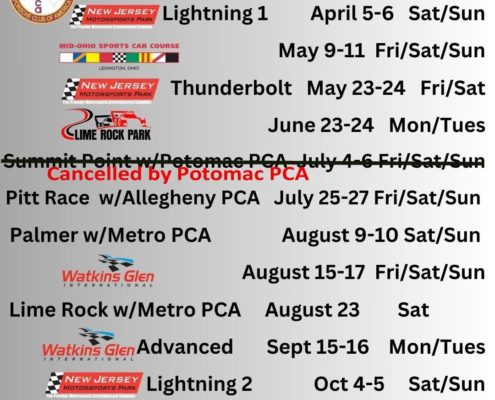 https://nnjr-pca.com/wp-content/uploads/2025/02/IMG_3705-scaled.jpg
1024
1024
Dyke
https://nnjr-pca.com/wp-content/uploads/2020/04/NNJRLogo2020Grey-300x60.jpg
Dyke2024-12-31 09:36:502025-03-19 20:11:312025 Track Schedule
https://nnjr-pca.com/wp-content/uploads/2025/02/IMG_3705-scaled.jpg
1024
1024
Dyke
https://nnjr-pca.com/wp-content/uploads/2020/04/NNJRLogo2020Grey-300x60.jpg
Dyke2024-12-31 09:36:502025-03-19 20:11:312025 Track Schedule

